Turkeys are large, densely feathered birds that make excellent additions to a backyard flock. The abundance of feathers gives them an advantage over chickens in the winter, making turkeys extremely cold-hardy.
Turkeys are most comfortable in temperatures between 40-75°F. Turkeys are designed to cool themselves through their breath, unlike other animals that have the ability to sweat in the heat. Therefore, high heat temperatures pose a greater threat to them than cold temperatures.
However, you may observe their activity level decreasing if the weather is either too cold or hot for their liking. For example, their vocal activity may decrease when they are too hot or too cold.
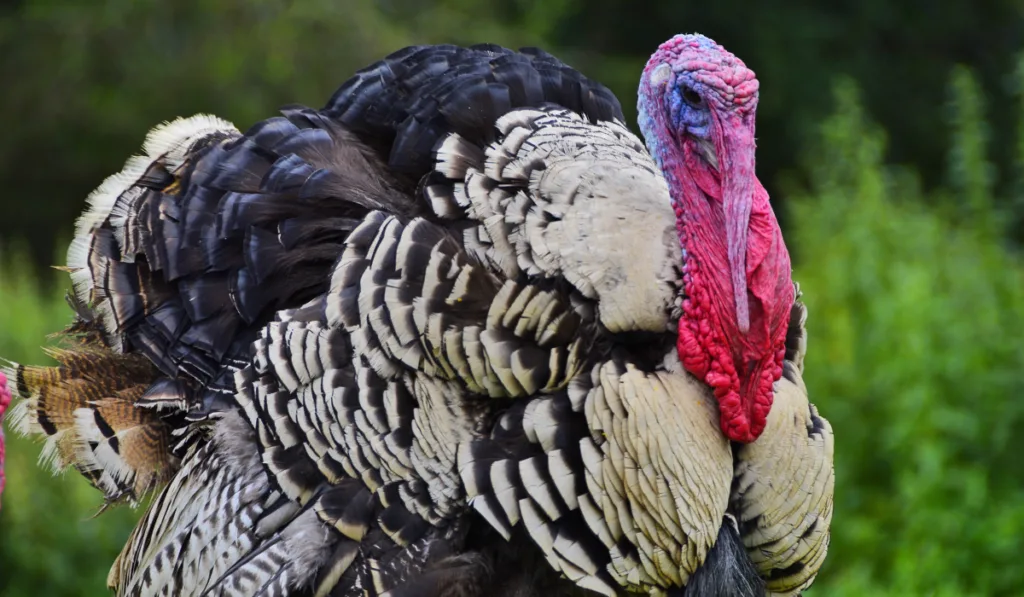
Turkeys can overwinter in temperatures below freezing provided they have adequate shelter, water, and extra feed to support the increased calorie burn of producing enough heat for them to stay warm. With the right care, your turkeys will come through winter happy and healthy.
Table of Contents
Can turkeys freeze to death?
Turkeys will not typically freeze to death due to their abundance of feathers. Their feathers keep them warm so even if their feet become so cold they can’t walk, their feathers keep their body temperature regulated for the prevention of hypothermia and even death.
Can turkeys sleep outside in the cold?
A turkey may sleep outside in the cold, but sheltering inside is recommended during periods of extreme cold. The preferred bedding materials for turekys are sand, wood shavings, or hay. These beddings should be changed often.
However, when it is cold you may want to provide a more well-insulated resting place for your turkey. This may include increasing the bedding in the roosts. A larger amount in a small area will increase the insulation and help your turkey stay warm.
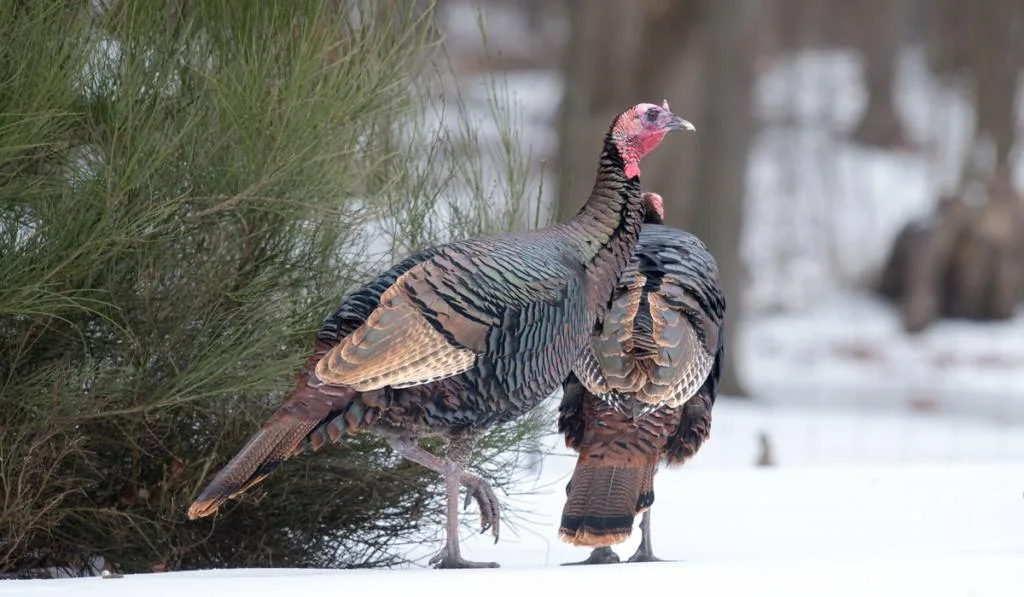
How to tell if your turkeys are too cold
There are many warning signs that a turkey may show when feeling too cold. Turkeys are overall hardy animals, meaning they are able to withstand low temperatures (below 20°F) for periods of time.
When they’re feeling too cold, a turkey may resort to very little movement. Their appetite may decrease and they may refuse activity with their owners, as well as staying in their roost for long periods of time.
When this is the case, you can wrap them in blankets and make sure the turkey is in a warm and secure place that will help them regulate their body temperatures. Some tips for preventing your turkey from getting too cold include:
- Keep their coop dry and clean
- Ensure the coop is well ventilated
- Add extra bedding during colder temperatures.
Should you change your turkey’s diet when it is cold outside?
Changing your turkey’s diet during the cold winters is not necessary. Nevertheless, when it is extra cold outside such as during the winter in northern climates, it may be beneficial to increase the amount of food in their diets. This just means that whatever they eat regularly may be increased, but not necessarily changed.
For example, a turkey’s regular diet consists of grasses, fruits, and vegetables, thus contributing to well-balanced nutrition. However, during cold winter months, giving them an increase in these nutrients allows them to store more fat. The extra at can then be burned as an energy source trying to stay warm in extreme cold. The extra feed ensures they have enough to sustain proper health.
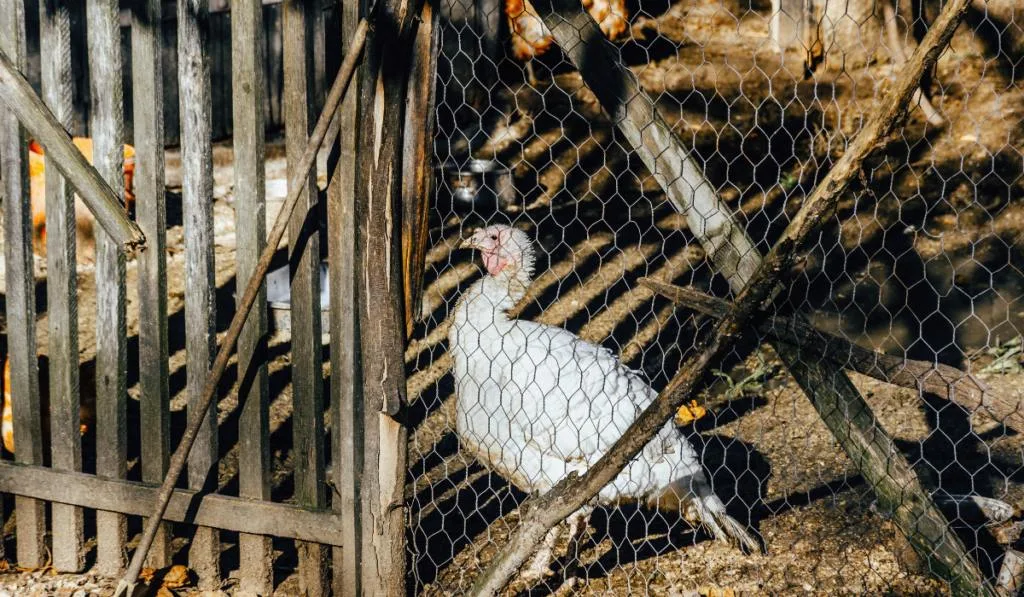
Type of shelter/bedding for cold weather
Turkeys like to live outside whether they are in the wild or living on a farm. They enjoy roosting in trees, and building nests out of sticks and leaves. When kept as a pet, they like to have similar enclosures.
They may live in a barn or shed, which is well insulated with plenty of sand, woodchips, hay, or sawdust. The more insulation there is, the better they can tolerate low temperatures.
You do not need to change the bedding type to prepare for the colder months, but increasing the amount of the material will provide a more comfortable living condition for the turkey. Additional bedding quantities for the winter include:
- Wood shavings (1-2in)
- Sawdust (1-2in)
- Sand (2-3in)
- Dirt (1-2in)
Turkey breeds that do well in colder weather
Although turkeys are already hardy animals by nature, some turkey breeds do better than others in colder climates. Below is a list of these most common types of hardy turkey breeds.
| Breed of Turkey |
| Standard Bronze Turkey |
| Blue Slate Turkey |
| Narragansett Turkey |
| Bourbon Red Turkey |
| White Holland Turkey |
1. Standard Bronze Turkey
The Standard Bronze turkey was developed in America. Known for their large and extravagant tails, these birds are colored very similar to the wild turkeys in North America.
Bronze turkeys are one of the most common turkey breeds in captivity. They have an average weight of around 25 pounds for a tom and 16 pounds for a hen, with a lifespan of 3-4 years.
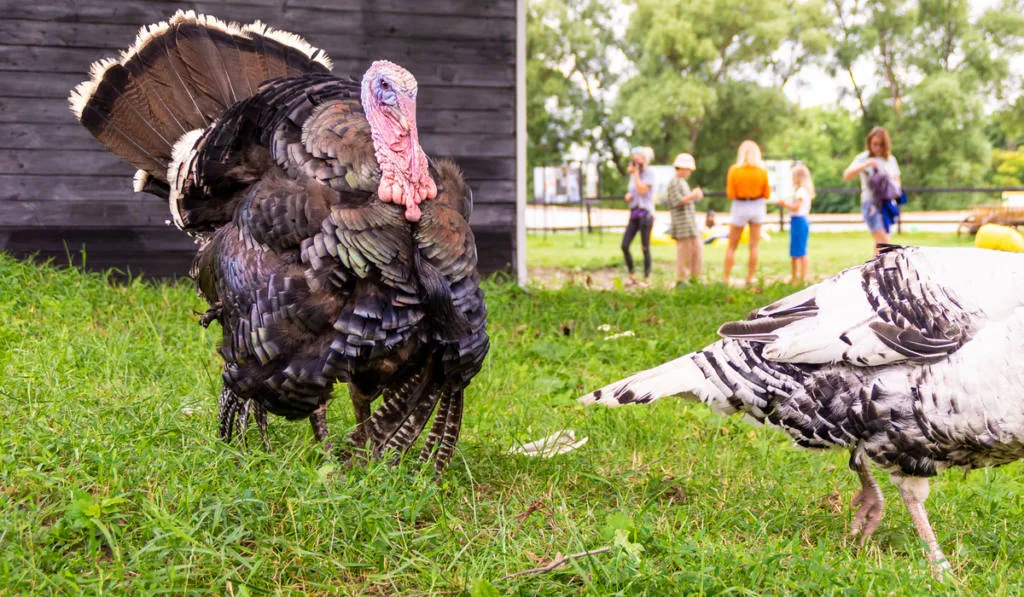
2. Blue Slate Turkey
The Blue Slate turkey originated in Mexico and has been around for over 200 years. It has been recognized by the American Poultry Association since 1874. This breed is known for its broad body with a wide array of feathers towards its back end.
Blue Slates come in three recognized colors, blue splash, blue slate, and solid black. This turkey may weigh around 23 pounds and have an average lifespan of 5-9 years with proper care and health.
3. Narragansett Turkey
The Narragansett Turkey originated in Rhode Island. It is known to be a crossbreed of the Native eastern turkeys and Norfolk (or Spanish) black. Being around for over a century, these turkeys are known for their production of meat.
This turkey has the distinct characteristics of a broad body and multi-colored feathers, commonly white, black, tan, and gray. They have an average weight of 16-27 pounds and an average lifespan of 5-7 years.
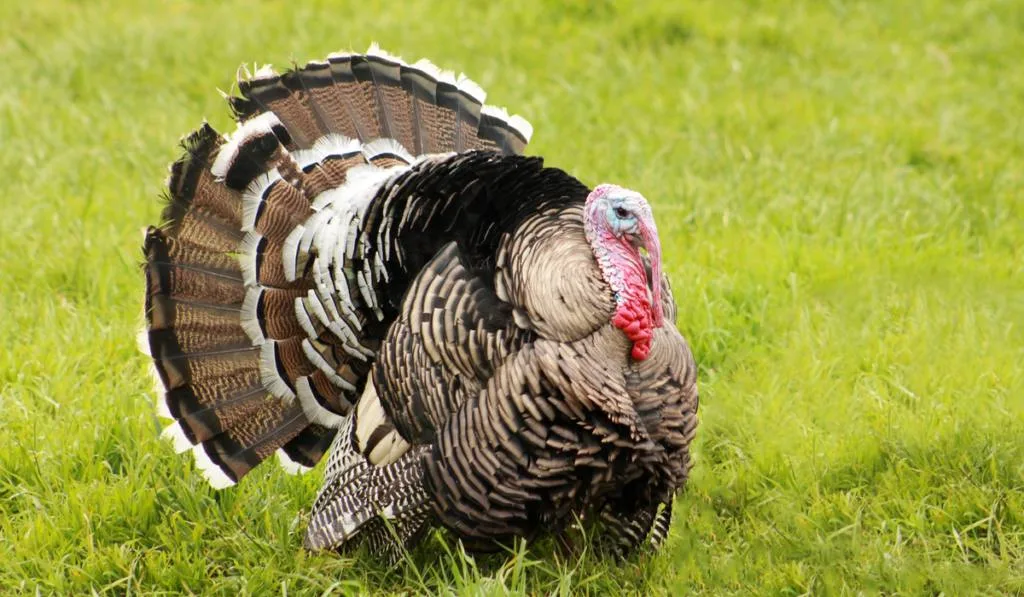
4. Bourbon Red turkey
The Bourbon Red turkey originated in Kentucky as a crossbreed between the Standard Bronze and White Holland turkeys. Known for its domestic abilities and production of meat, this turkey is commonly found to be a deep chestnut red color.
Having an average weight of 18-30 pounds makes them one of the heavier breeds, therefore, they work well as meat birds. They can live 7-10 years.
5. White Holland turkey
The White Holland turkey originated in the Netherlands. It is known to be a crossbreed between the White European and North American turkey. It was recognized by the American Poultry Association in 1874.
White Holland’s have an average weight of around 16-25 pounds with a lifespan of around 5 years.
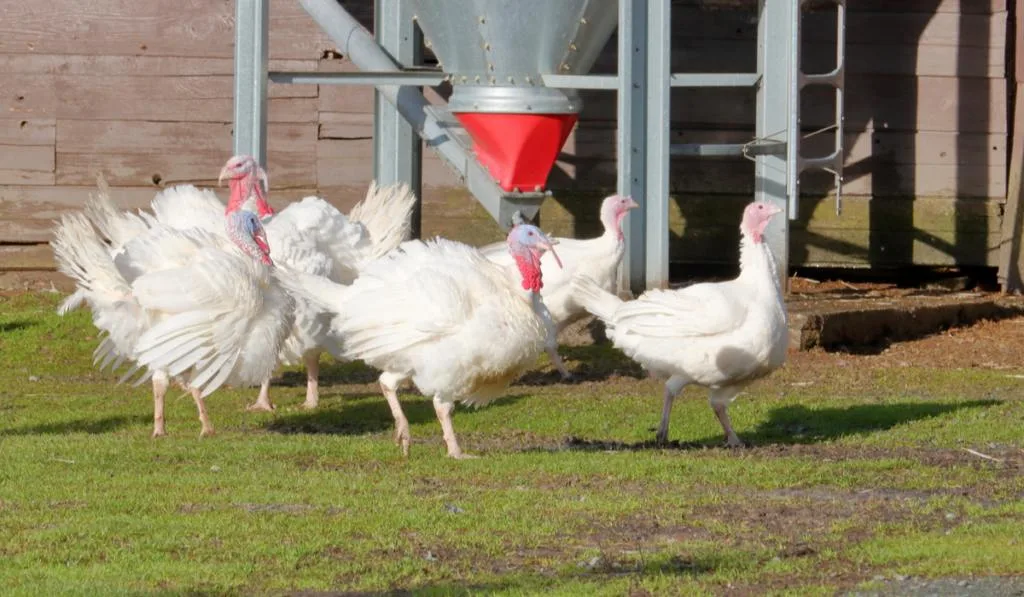
Special note:
This information provided is not a suitable substitute for medical advice. If you believe your turkey is showing a negative symptom or abnormal behavior, it is best to take it to your veterinarian immediately to prevent and avoid any illnesses.
Resources
- https://www.theselfsufficienthomeacre.com/2018/04/your-list-of-heritage-turkey-breeds-for-the-homestead.html
- https://www.mossyoak.com/what-best-weather-turkey-hunting
- https://www.purelypoultry.com/turkey-care-ezp-87.html
- https://www.southernstates.com/farm-store/articles/attracting-wild-turkeys
- https://www.nwtf.org/hunt/article/life-expectancy-turkey
- https://www.nwtf.org/conservation/article/winter-habitat-northern-wild-turkeys
- https://www.agriculture.com/livestock/poultry/blue-slate-turkey-profile_287-ar13323
- https://thechickhatchery.com/home/blue-slate-turkey/
- http://afs.okstate.edu/breeds/poultry/turkeys/narragansett/index.html/
- https://morningchores.com/narragansett-turkeys/
- https://en.wikipedia.org/wiki/Bourbon_Red
- https://en.wikipedia.org/wiki/White_Holland
- https://agnetwest.com/slowly-disappearing-unique-turkey-variety/
- https://www.cacklehatchery.com/product/bronze-standard-turkey/
